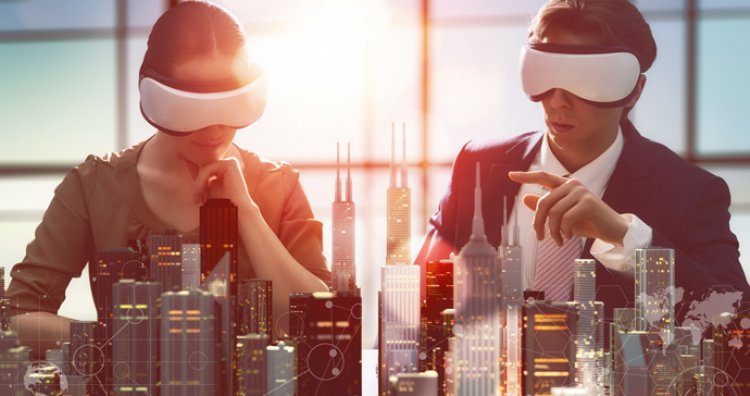How Companies Can Use Virtual Reality Creatively
Companies that produce virtual reality products are trying to integrate this technology into the corporate world by investigating the potentials of customer interaction and experience.

The pandemic has been the ultimate event that ignited the regular use of virtual reality in our lives.
More and more industries are finding new, exciting and unique ways to use virtual reality to promote and show their products and services to potential customers. Virtual reality is one of the most promising enterprise technologies you can adopt to secure your company's future.
Unique Ad Experiences
The method of using traditional channels (TV, newspaper, billboard, etc.) for advertising and marketing methods has become less and less convincing in recent years as consumers have now learned most of the advertising tricks. Now that the expectations of the target audience have increased, they are looking for a more interactive method of persuasion to decide to buy a product.
Dive into the world of virtual reality. Advertising and marketing capabilities are taken to the next level with customized virtual reality solutions. Many content creation companies have embraced virtual reality to engage consumer interest with their advertising content. For example, 360-degree virtual reality promotional videos offer people an interactive experience.
Virtual Meetings and Collaboration
Many employees are now familiar with using video chat apps like Zoom to hold meetings, especially since they are working from home during the pandemic. However, virtual technology offers a more realistic and collaborative experience during meetings and collaborations, much like face-to-face interactions. In addition, the whiteboard has many additional advantages such as data visualization and 3D design possibilities.
Companies that leverage the power of virtual reality to increase collaboration during meetings have other advantages beyond the ones we've listed. Different teams that are not in the same geographic location can use virtual reality to gather, while saving on travel costs and reducing environmental costs. Less travel between physical locations reduces the stress level, mental and physical fatigue of employees, thus increasing productivity.
Virtual Construction
Architects and construction companies can now make more detailed plans thanks to customized virtual reality applications. In this way, companies show the construction plan in three dimensions and in detail to the customer before the construction or renovation process begins, ensuring that they are sure and conducting a healthier process.
Such projects are visualized in virtual environments, and every aspect of them is examined, from security measures to design highlights, thereby increasing overall efficiency. Thanks to the possibility of making a virtual house tour before a house is built or redesigned, some points can be easily changed at the request of the customer and the customer's expectations are met. In the coming years, virtual reality is expected to replace traditional two-dimensional drawings.
Employee Training with VR
New employees always need training, just as existing employees need to update their skills from time to time when new company procedures and processes are implemented. Virtual reality can be used to simulate some situations for both company employees and students of any education level. Virtual reality offers them a more effective, realistic and multi-sensory experience than traditional teaching methods such as lectures and books. In this way, both trainees and employees can put themselves through a more comprehensive training process to demonstrate their mastery.
Virtual and augmented reality has been rapidly adopted in many educational programs, especially when it comes to health and medical education, as it allows students to use 3D programs with holographic anatomy. These programs allow students to view cadavers with VR, thus helping them have a deeper understanding of the human body in real time. It also saves hours of time spent with real cadavers in traditional laboratories.
Virtual Tourism
Virtual reality tours to real-life tourist spots are advantageous as tourism companies can use them to motivate potential visitors with a virtual vacation experience. This technology can be used to show points such as sights, festivals and famous places to encourage users to book tickets to these places.
Virtual reality museums are an example of tourism promotion that has become much more normal since the emergence of COVID-19. There are now many interactive museum tours in countries around the world that offer immersive VR experiences when physical museum visits are not available for some reason (currently due to COVID-19). Companies that offer hotel and vacation packages have made great use of virtual reality for potential customers. This shows that companies will continue to use virtual reality technology to persuade potential customers to stay in their hotels after the pandemic.
Conclusion
The trend shows that virtual reality technology will deeply affect all of our lives in the long run. Virtual and augmented reality have already begun to change the dynamics of companies working both within themselves and with their customers. Companies that decide not to adopt this emerging technology will almost certainly be superior to their competitors. Now is the time to discover new ways in which you can give your audience incredible experiences in the virtual world and truly take your business to the next level.